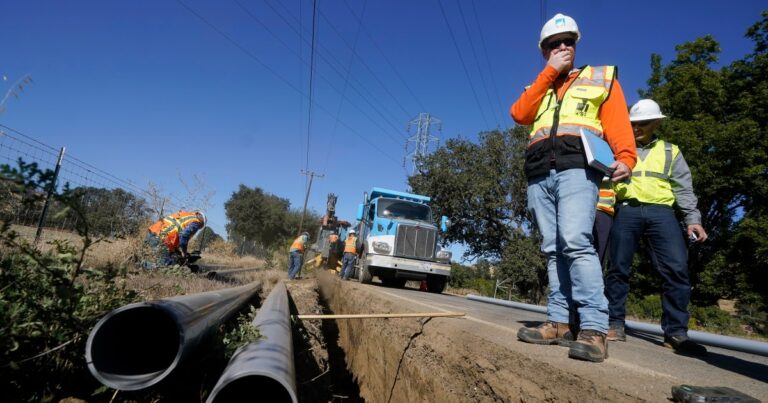Understanding Electricity Price Fluctuations: A 2024 Perspective
Electricity bills are a significant concern for households across the nation, particularly as the winter months approach. Recently, a spokesperson highlighted that the average household electricity bill in December 2023 saw a reduction of 4.5% compared to January 2024. This decrease in the monthly bills can be attributed to rate cuts announced during the summer, aimed at alleviating burdens on consumers. However, these reductions might prove to be short-lived due to impending rate hikes on the horizon.
Expected Rate Hikes and Their Implications
The upcoming months may bring new challenges for consumers, as any approval of proposed rate hikes could effectively negate the current discount. The spokesperson’s statement indicates that this fluctuation in pricing largely depends on the timing of regulatory approvals related to cost recovery. The implications of these impending hikes mean that consumers must prepare for the possibility of increased bills as early as January and extending into March.
Factors Contributing to Price Increases
The anticipated increases in energy prices have various underlying causes. Industry representatives point to multiple factors including the need for vegetation management around power lines, investments in new customer data and billing systems, and extended operational hours at facilities such as the San Luis Obispo nuclear power plant. Each of these elements incurs costs that are eventually transferred to the customers through increased rates.
The Role of Advocacy Groups and Regulatory Changes
In light of the potential rate hikes, the Utility Reform Network (TURN), a nonprofit organization that advocates for regulatory reforms, is pushing for legislation aimed at safeguarding customers from the financial repercussions of utility spending. Specifically, they are advocating for a bill that would prevent utilities from passing on lobbying and advertising expenses to consumers. However, it is essential to note that similar proposals have encountered resistance and failed to make progress in legislative committees earlier this year.
Calls for Transparency From Utility Providers
Mark Toney, the executive director of TURN, voiced concerns regarding the continuing trend of increasing rates at Pacific Gas and Electric Company (PG&E). He urged for greater transparency and oversight of PG&E’s financial decisions, particularly as these decisions directly impact consumers who are already grappling with inflated living costs. Toney pointed out that the high energy prices invariably affect everyday items, as the ripple effect of these costs extends well beyond utility bills.
Experiences of Affected Ratepayers
For affected residents like William Abrams, whose home was lost in the 2017 Tubbs Fire, the stakes are even higher. Abrams has become a vocal advocate for transparency and accountability in how PG&E sets and adjusts electricity rates. When questioned about the utility’s pledge to maintain a stable interest rate environment, Abrams expressed skepticism, citing a history of unpredictable price adjustments. His commentary underscores a general concern that any increased spending on safety initiatives, particularly those aimed at fire prevention, could translate into further financial burdens for ratepayers.
The Future of Electricity Pricing in California
The interplay between rate cuts and potential increases raises questions about the future of electricity pricing in California. As regulatory bodies consider various proposals and as utilities like PG&E prepare to submit new rate hike requests, consumers are left in a state of uncertainty. The call for a cap on price increases, along with a demand for improved operational efficiencies, is becoming increasingly important to ensure that electricity remains affordable for all households.
Conclusion
As we move deeper into 2024, the landscape of household electricity pricing is fraught with uncertainty. With proposed rate hikes on the horizon and advocacy groups seeking to impose stricter regulations, it remains crucial for consumers to stay informed and engaged in discussions regarding utility management. The connectivity between rising energy costs and overall economic stability emphasizes the need for a thoughtful approach to balancing the financial requirements of utility providers with the protection of consumers’ interests.
FAQs
Why did electricity bills decrease in December?
The average household electricity bill in December was 4.5% lower due to rate cuts announced during the summer.
When will the new rate hikes take effect?
If approved, the new rate hikes are expected to take effect in January and March of 2024.
What are the main reasons for the proposed price increases?
Reasons for the anticipated price increases include the need for tree trimming near power lines, upgrades to billing systems, and operating costs related to nuclear facilities.
What actions are advocacy groups taking regarding electricity pricing?
The Utility Reform Network is advocating for legislation that prevents utilities from passing lobbying and advertising costs onto consumers, among other reforms.
How do increased energy prices affect other consumer goods?
High energy prices can indirectly raise the costs of everyday items, as they impact manufacturing and transportation expenses, ultimately affecting consumers at the grocery store and beyond.



